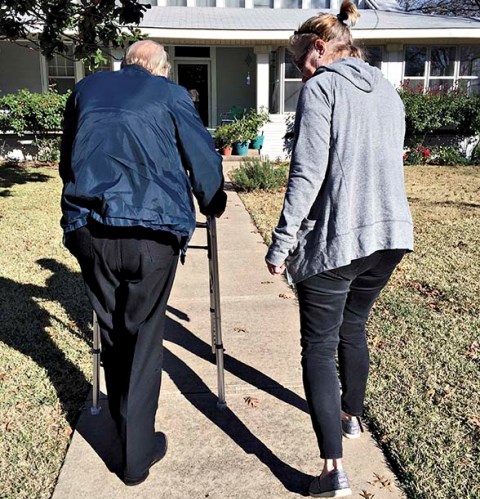As an individual requires more care due to aging and illness, many find themselves considering long-term care. Family members may bring it up. Doctors may even recommend considering it. Often discussing the possibility brings up strong emotions. But the good news is that there are more than just two choices, home or long-term care.
There are a wide range of services available, including home care services available from public and private agencies, volunteers and professionals from community service organizations, assisted living and short-term respite care to give caregivers a break. Because healthcare is a provincial responsibility, options will vary from province to province. These are the main options available in Ontario. With this range of services, individuals can get the care they need while maintaining what’s most important to them.
This suite of care options can evolve as an individual’s needs progress – and as the abilities of a caregiver change also.
Community Services
There are many community services that may be helpful in place of, or in addition to, health care supports at home. These services can contribute to enhanced independence, enjoyment and relaxation as well as much-needed caregiver support. These services can help reduce the stresses of daily living for both the individual and the caregiver and may include:
- Meal delivery and dining programs
- Transportation services
- Friendly visits
Fees may be charged for some services, such as meal delivery, but they are often reduced.
Publicly-funded Home Care
If you require health care or personal support in your home or community, many provinces provide some amount of publicly-funded home care. In Ontario, this is done through the Community Care Access Centres (CCACs). Through personal visits and regular check-ins, they determine the right care and health supports for people and their families.
CCACs have built strong relationships with trusted service provider partners and have a rigorous process to select the most qualified health care providers to care for clients in their community. Services may include:
- Care Coordination
- Nursing
- Personal support, such as bathing and getting dressed
- Physiotherapy, occupational therapy, nutritional counseling and speech-language therapy
- Social work
- Medical supplies and equipment
Private home care agencies
These can provide nurses, personal support workers and housekeeping services for short and longer term. These services must be paid for by the client or family members. Usually you are not required ‘qualify’ or demonstrate a particular level of need.
Residential living
There are different types of residential living available to people who need some assistance, but don’t have needs that are high enough to qualify for long term care. In Ontario, three distinctions are Assisted Living, Supportive Housing and Retirement Homes. These are sometimes confused, but serve different functions.
Assisted Living – Some seniors may require more daily care than home care can provide, yet do not need the medical monitoring or supervision of a long-term care home. Assisted living programs may be the right option. Services vary according to need, and can include personal care, homemaking and an emergency response system. Assisted living programs may be offered in a variety of settings, including seniors’ apartments and social housing buildings.
Supportive Housing – Supportive housing provides seniors and adults with physical or cognitive disabilities, mental health issues or HIV/AIDS with support and accommodation in specially-designed buildings, or apartments. Living arrangements may include shared houses or apartments and self-contained apartments. Through the Ministry of Health and Long-Term Care, personal support is provided on-site, 24 hours a day.
Supportive housing buildings are owned and operated by not-for-profit corporations. In most cases, the rent charged is based on ability to pay, or the market level rent is subsidized through the Ministry of Housing.
For Assisted Living and Supportive Housing, individuals must be assessed and hold a provincial health card.
Retirement Homes – Retirement homes are privately owned and operated facilities that provide supportive services to residents that vary with the home, but may include housekeeping, meals, and laundry services. Some retirement homes also provide assistance with bathing, dressing, medications, general support, nursing, wound care, supervision and other services.
Retirement homes are regulated and licensed, but do not receive funding from the government. You can apply directly to a retirement home for admission, but you should discuss your specific needs with one or more homes before making a decision.
Respite care
When an individual has significant needs, but is able to stay at home because a family caregiver (such as a spouse or child), short term care is available when that caregiver needs a break. Often it means an individual will stay in a long-term care residence for a few weeks or up to 60 days. Besides giving the caregiver a much-needed break, this also can be an opportunity to introduce potential clients to long-term care. As with all residential care, a fee is charged for respite care.
For more information about any of these options, in Ontario contact HealthcareAtHome.ca or 310-CCAC. Information about community services can be found at Healthline.ca.


